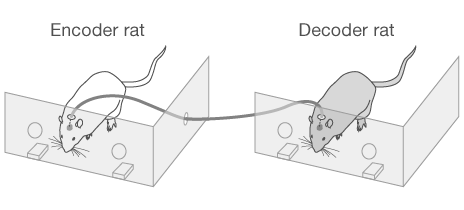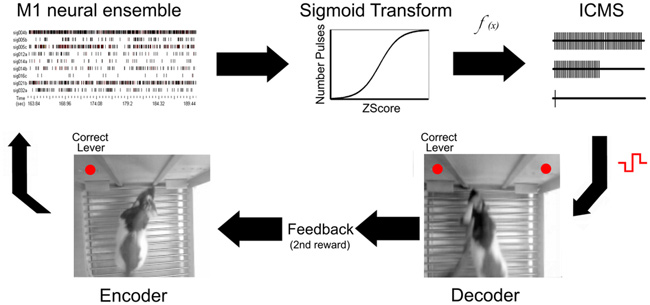The first brain-brain interface (so far in rats)

Miguel Nikolelis and Mikhail Lebedev and colleagues from the Department of Neurobiologists at Duke University (USA) published a scientific paper describing the world's first interface for transmitting signals from brain to brain via the Internet.
The brain-to-brain interface (BTBI) provides for the transmission of pulses in electronic form in real time from the brain of one rat to the brain of another rat. During the experiment, the first rat (encoder) at Duke University carried out sensorimotor tasks requiring a choice of two options using tactile or visual stimuli. In the process of performing the task by the encoder, samples of brain activity were transferred to the corresponding brain regions of the second rat (decoder) using intracortical stimulation (ICMS). At the same time, the rat decoder was physically located in Brazil.
The experiment showed that the rat decoder is able to demonstrate behavior based solely on information from the brain of the mouse encoder. The diagram shows a feedback in the form of a reward for the first rat for the fact that the second rat successfully completed the task. With the help of such “feedback”, scientists have established a kind of interactive brain connection between the encoder and the decoder.

Thus, in the brain of the rat decoder, rather complex neural connections are formed based on the relative impulses received from the brain of the rat encoder. This is a very encouraging result that can be used as a foundation for new research on the transfer of various information directly from the brain to the brain.
The new interface is a continuation of previous research by scientists to create brain-computer interfaces, with the help of whichrat neurons were used to control the robot and, conversely, the rat itself can be controlled from a computer program , stimulating the corresponding neurons through the head-mounted interface wirelessly.
